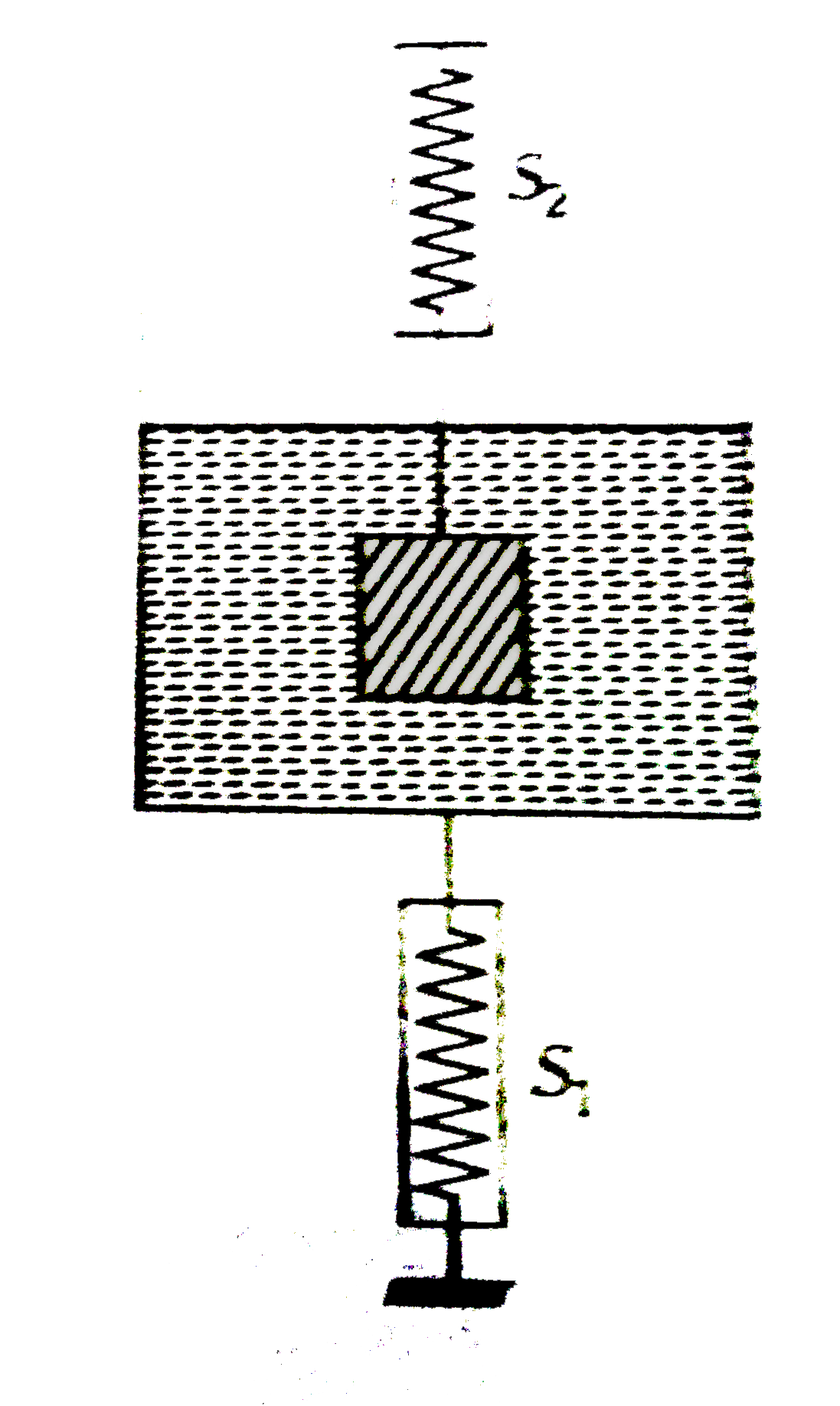A beaker containing water is placed on the platform of a spring balance. The balance reads 1.5kg. A stone of mass 0.5kg and density 104kg/m3 is immersed in water without touching the walls of the beaker. What will be the balance reading now?
2 kg
2.5 kg
1 kg
3 kg
Step by step video & image solution for A beaker containing water is placed on the platform of a spring balance. The balance reads 1.5 kg. A stone of mass 0.5 kg and density 10^(4) kg//m^(3) is immersed in water without touching the walls of the beaker. What will be the balance reading now? by Physics experts to help you in doubts & scoring excellent marks in Class 12 exams.
Updated on:21/07/2023Topper's Solved these Questions
- FLUIDBOOK - MOTIONCHAPTER - FLUIDEXERCISE - Exercise-2 (level-I)
10 Videos
- FLUIDBOOK - MOTIONCHAPTER - FLUIDEXERCISE - Exercise-2 (level-II)
2 Videos
- FLUIDBOOK - MOTIONCHAPTER - FLUIDEXERCISE - Exercise-4 level-II
5 Videos
- ERRORS , THEORY BOOK - MOTIONCHAPTER - ERRORS , THEORY EXERCISE - EXERCISE 4 (LEVEL -II)
10 Videos
- GEOMETRICAL OPTICSBOOK - MOTIONCHAPTER - GEOMETRICAL OPTICSEXERCISE - Exercise - 4 | Level-II
55 Videos
Similar Questions
A beaker containing water is placed on the platform of a spring balance.The balance reads 15N .A stone of mass 0.5 kg and density 500kgm3 is kept fully immersed in water without touching walls of beaker and held at rest.What will be the balance reading now? (g=10ms2)
View SolutionA beaker containing water is placed on the pan of a balance which shows a reading of 200 g. A lump of sugar weighing 75 g and of volume 30 cc is now suspended inside the water from an external support without touching any part of the beaker. (a) what will be the reading just when the lump of sugar is immersed ? how will the reading change as time passes ? (b) what will be the initial reading if the lump is simply dropped gently into the beaker and how will the reading change?
View Solution
Knowledge Check
A beaker containing water with a total mass of 10kg is placed on the pan of a balance A . A solid body of mass 5kg and density 50g/cc suspended from a spring balance B is gently lowered in the water contained in the beaker. So that it gets fully immersed with out any contact with the beaker. Find the ratio of readings shown by the balance A and B.
A114B74C94DNone of theseA beaker containing water is balanced on the pan of a common balance. A solid of specific gravity 1 and mass 5 g is tied to the arm of the balance and immersed in water contained in the beaker. The scale pan with the beaker
Agoes downBgoes upCremains unchangedDnone of theseA beaker containing water is balanced on the pan of a common balance. A solid of specific gravity 1 and mass 5 g is tied to the arm of the balance and immersed in water contained in the beaker. The scale pan with the beaker.
Agoes downBgoes upCremains unchangedDnone of these
A block of bras of mass 0.5 kg and density 8×103kg/m3 is suspended from a string. What will be the tension in the string if the block is completely immersed in water? (g=10ms−2)
View SolutionA beaker containing water is placed on the pan of a spring balance which shows a reading of W0. A lump of sugar of mass m and volume v is now suspended by a thread (from an independent support). How will the reading change as time passes on ?
View SolutionA bucket of water is suspended from a spring balance. What happens to reading of balance
(a) when a piece of stone suspended from a string is immersed in the water without touching the bucket
(b) when a piece of lead or cork is put in the water in the bucket.
View SolutionThere is more water in a beaker placed in the pan of a spring balance.If we dip our finger in this water without touching the bottom of the beaker, then what would be the effect on the reading of the balance ?
View SolutionA beaker containing water is kept on a spring scale. The mass of water and beaker is 5 kg . A block of mass 2 kg and specific gravity 10 is suspended by means of thread from a spring balance as shown. The readings of scales S1 and S2 are respectively Take, g=10ms−2

View Solution
